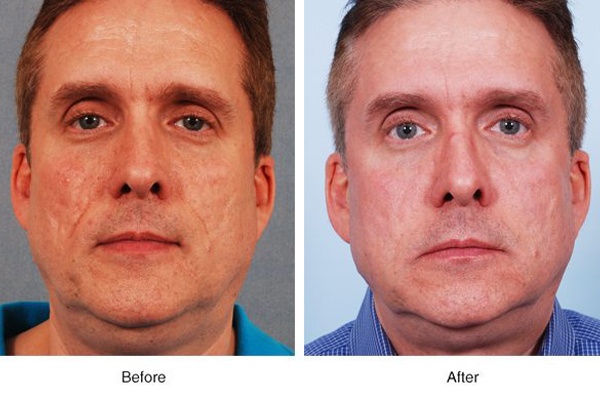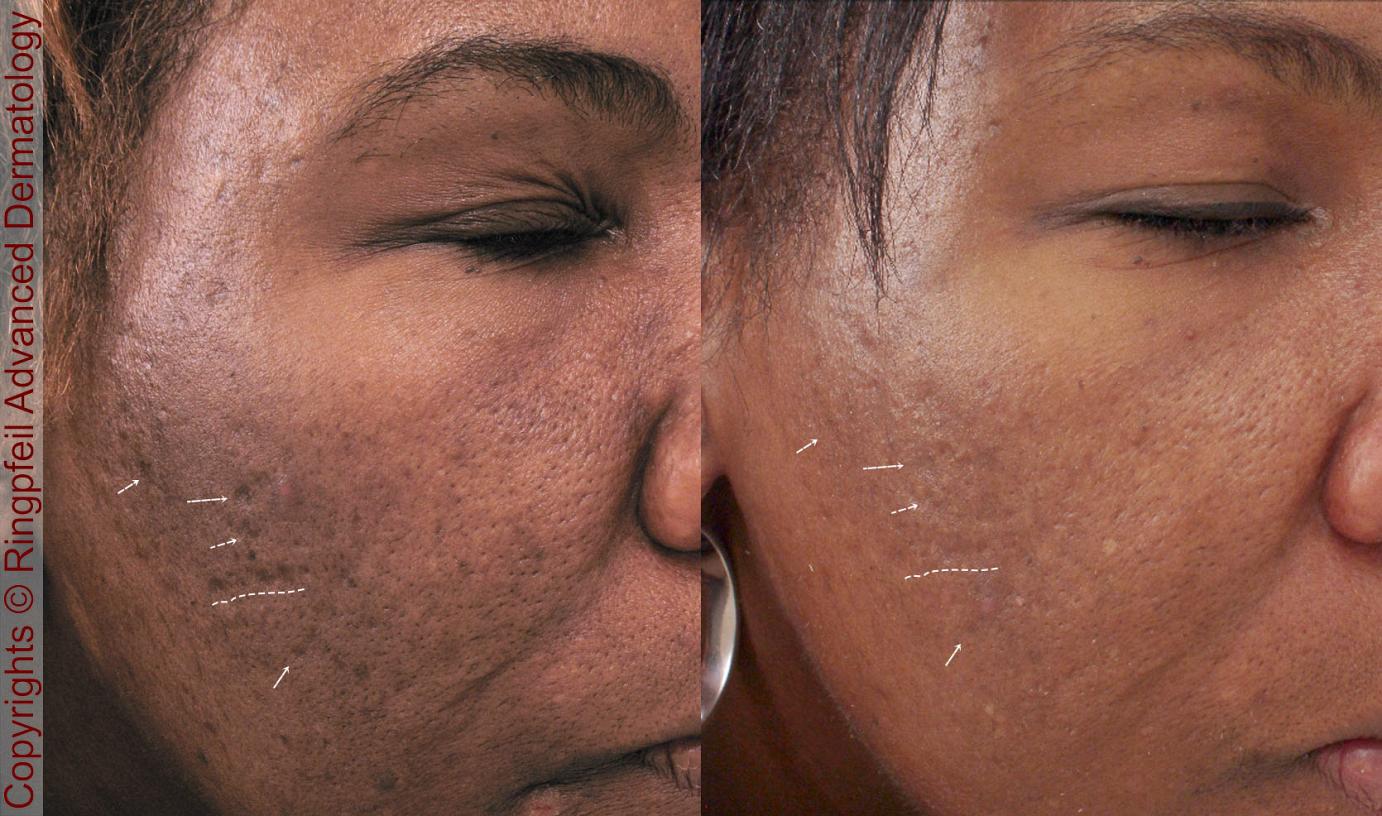Best Acne Scars Treatment: Advanced Techniques for Easier Skin
Best Acne Scars Treatment: Advanced Techniques for Easier Skin
Blog Article
Recognizing the Numerous Skin Disease and Reliable Treatment Choices for Acne Marks
Acne marks stand for an intricate interaction of skin problems that substantially effect individuals' self-confidence and overall skin health. As we explore the landscape of acne scar management, it becomes evident that the trip towards more clear skin may involve even more than simply topical options.
Kinds Of Acne Scars

On the other hand, hypertrophic scars arise from an overflow of collagen during the healing procedure, leading to increased locations on the skin. These scars are typically strong and can vary in color, often showing up red or darker than the surrounding skin.
Comprehending these kinds of acne marks is essential for establishing a reliable therapy plan - acne scars. Choices may consist of chemical peels, laser treatment, microneedling, or facial fillers, customized to the specific scar type. A complete appointment with a dermatologist can help identify the most proper treatment, taking into consideration the person's skin kind, mark extent, and total skin wellness
Reasons For Acne Scarring
Marking takes place as an outcome of the body's all-natural healing action to swelling and injury triggered by acne sores. When acne types, it activates an inflammatory action, causing the launch of different cytokines and growth variables that promote recovery. However, this procedure can sometimes result in excessive tissue development or poor repair, leading to scars.
The primary sources of acne scarring consist of the seriousness of the acne itself, duration of the sores, and specific skin types. Severe inflammatory acne, such as blemishes and cysts, is more probable to cause scarring as a result of deeper tissue damages. Furthermore, improper handling of acne sores, such as pressing or choosing, can exacerbate cells injury and inflammation, increasing the chance of scarring.
Hereditary predisposition additionally plays a considerable role; people with a household background of scarring go to a higher danger. Skin type and shade can influence scar development, as darker skin tones may experience post-inflammatory hyperpigmentation, while lighter skin might establish atrophic marks.
Eventually, recognizing these causes is essential in handling acne and mitigating the possibility for scarring.

Treatment Alternatives for Scarring
Effective therapy choices for acne scarring vary relying on the type and severity of the marks. Typically classified into atrophic, hypertrophic, and keloid marks, these problems require customized methods for optimum outcomes.
For atrophic scars, which are defined by a loss of tissue, treatments such as chemical peels, microdermabrasion, and laser therapy are commonly employed. These techniques promote skin revival and promote collagen manufacturing, consequently enhancing skin texture. Subcision, a minimally intrusive procedure, can additionally be effective by separating fibrous bands under the skin.
Hypertrophic and keloid marks can be much more testing to treat. Choices consist of corticosteroid injections to minimize inflammation and flatten the marks. In some cases, cryotherapy or laser therapy might be recommended to lessen their appearance.
Surgical choices are readily available for severe scarring, where excision or skin grafting may be essential. It's vital for people to speak with a skin specialist to analyze their particular mark kind and discuss the most appropriate therapy strategy. Combining several treatments often produces the most effective end results, ensuring that each individual's one-of-a-kind skin problem is dealt with successfully.
Natural Home Remedy and All-natural Solutions
All-natural solutions and natural remedy can supply an obtainable approach for individuals seeking to improve the appearance of acne scars (acne scars treatment). Numerous active ingredients located in the home kitchen have shown possible advantages in improving skin structure and advertising healing

One more effective alternative is lemon juice, which serves as an all-natural exfoliant and can lighten hyperpigmentation. It must be used carefully, as it may trigger photosensitivity. Oat meal masks are likewise beneficial; their gentle peeling can help eliminate dead skin cells acne and acne scars treatment while soothing inflammation.
Essential oils, such as tea tree oil and lavender oil, can additionally sustain scar recovery as a result of their antimicrobial residential properties. It is essential to do a spot test before using any kind of remedy to make sure there are no damaging reactions. These natural options can be a corresponding method in the trip to lessen acne marks.
Avoiding Future Scarring
Embracing an aggressive approach to skincare can considerably minimize the threat of developing future acne scars. One of the essential methods is to take care of acne effectively as it arises. This involves utilizing non-comedogenic skincare products and medicines recommended by skin doctors that target acne without aggravating the skin. Normal cleaning, peeling, and hydration can aid keep skin wellness and prevent clogged pores.
Furthermore, avoiding the temptation to press or choose acne lesions is essential, as this can bring about swelling and subsequent scarring. Rather, individuals ought to focus on using topical therapies that promote healing and reduce swelling. Components such as salicylic acid, benzoyl peroxide, and retinoids are understood for their efficacy in managing acne and decreasing marks.
Sunlight protection is an additional crucial element; exposure to UV rays can dim scars and hinder recovery. Using a broad-spectrum sun block daily can alleviate these effects.
Last but not least, preserving a healthy and balanced diet plan rich in anti-oxidants and staying moisturized supports skin regrowth. By implementing these safety nets, people can substantially lower their danger of future scarring and advertise general skin wellness.
Final Thought
In verdict, a thorough understanding of acne scars, encompassing both atrophic and hypertrophic types, is vital for efficient treatment methods. Examination with a skin doctor continues to be imperative to devise customized methods that think about individual skin types and scar severity, ultimately boosting the efficiency of mark monitoring methods.
Acne scars represent a complex interplay of skin conditions that considerably effect people' self-confidence and overall skin health. The two key groups of acne marks are atrophic and hypertrophic scars. These marks are additional categorized into 3 subtypes: ice choice scars, which are deep and narrow; boxcar marks, which are larger and have well-defined sides; and rolling marks, which produce a wave-like appearance due to irregular skin structure.
A complete assessment with a dermatologist can aid figure out the most suitable intervention, taking into account the person's skin type, mark intensity, and overall skin wellness.
Examination with a dermatologist continues to be critical to create personalized strategies that think about individual skin kinds and scar intensity, ultimately boosting the efficacy of mark management strategies.
Report this page